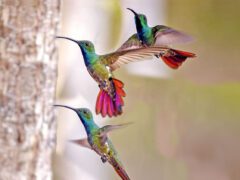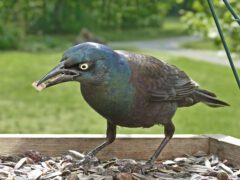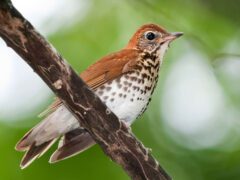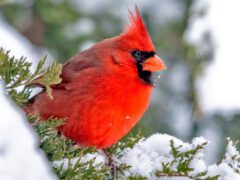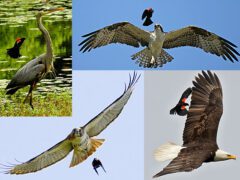The Four Keys to ID
- Size & Shape
A large hummingbird with a rather long, slightly decurved bill. It has a long, full tail and long wings.
Relative Size
Larger than a Broad-tailed Hummingbird, smaller than a Bridled Titmouse.

 sparrow-sized or smaller
sparrow-sized or smallerMeasurements
- Both Sexes
- Length: 4.3-4.7 in (11-12 cm)
- Weight: 0.3-0.3 oz (8.1-8.6 g)
© Jay McGowan / Macaulay Library
- Color Pattern
Adult males are bronzy green above with white lines above and below the eye and a glittering blue throat (gorget) that can appear dark in poor light. They are gray below, with whitish tips to blackish tail feathers. Females and juveniles are similar but lack the blue throat.
© Mel Senac / Macaulay Library - Behavior
Drinks nectar while hovering at flowers or hummingbird feeders. Often chases smaller hummingbirds away from food sources. May remain at a single patch of flowers or travel between productive patches of flowers when feeding. Also gleans insects from vegetation. Males display by singing quietly, flashing the blue gorget, and fanning the tail; females sometimes sing with males.
- Habitat
Inhabits coniferous and mixed woodlands between 3,200 and 11,500 feet elevation, usually in areas with an abundance of flowers, such as along creekbeds. Also visits feeders.
© Paul Wolter / Macaulay Library
Regional Differences
Ornithologists recognize three very similar subspecies, two of which occur in the United States. In Arizona and New Mexico, bessophilus is the breeding subspecies, while in far western Texas, phasmorus is found mostly in the Chisos Mountains. The largest of the three subspecies, clemenciae, occurs in Mexico.













